The backbone of Ukraine’s air force consists of cheap and familiar Soviet-era aircraft—but Kyiv has gradually gained experience with more advanced Western platforms as well.
Since Russia’s full-scale invasion of Ukraine in February 2022, Ukraine has defied international expectations, managing to fend off the invaders for more than three years. Part of Ukraine’s success, their stubborn success, is owed to the fact that they never fully conceded Ukrainian airspace to Russia; Ukraine continues to contest portions of their air space—raising awareness (and appreciation) for Ukraine’s air force. Five aircraft in particular stand out, as the most important to Ukraine’s air force: the F-16 Fighting Falcon; the Mirage 2000; the MiG-29 Fulcrum; the Su-27 Flanker; and the Su-25 Frogfoot.
Lockheed Martin F-16 Fighting Falcon
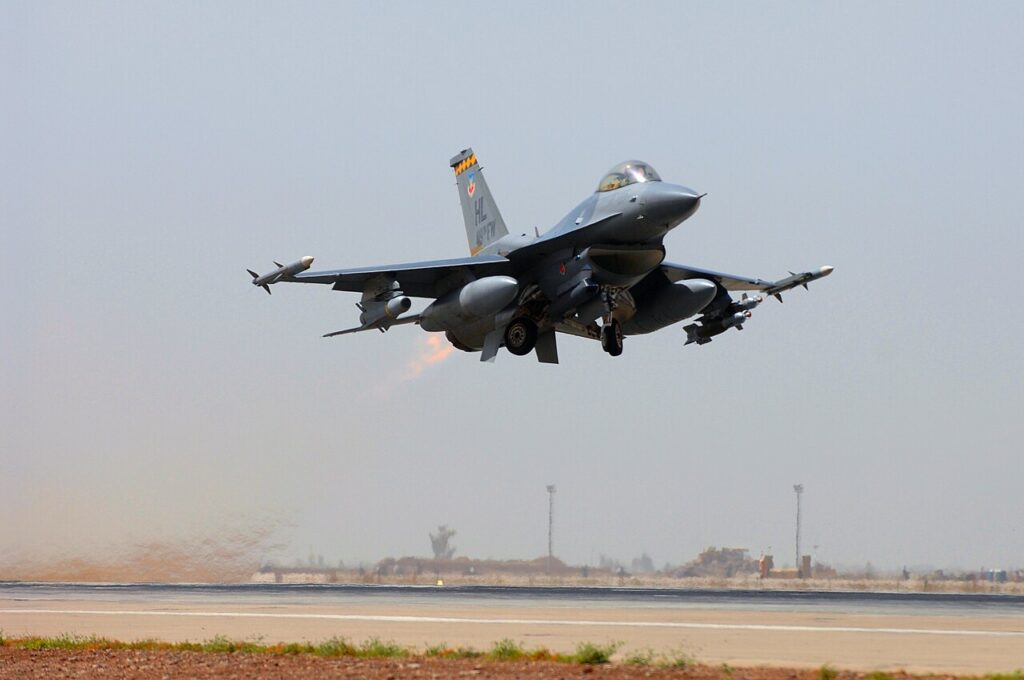
The recently Western-gifted F-16 marked a transformational leap in Ukraine’s air combat capabilities. Compliments of the United States, Denmark, and the Netherlands, Ukraine’s F-16 fourth-generation multirole fighters are equipped with NATO-standard radar, avionics, and weapons. While Ukraine’s stock of F-16s is finite, and accordingly treated preciously, the platform has proven adept in intercepting cruise missiles and drones while providing valuable standoff strike options. The F-16’s arrival to the skies over Ukraine has forced Russia to fundamentally rethink its air dominance strategy, giving Ukraine a stronger deterrent.
Dassault Mirage 2000
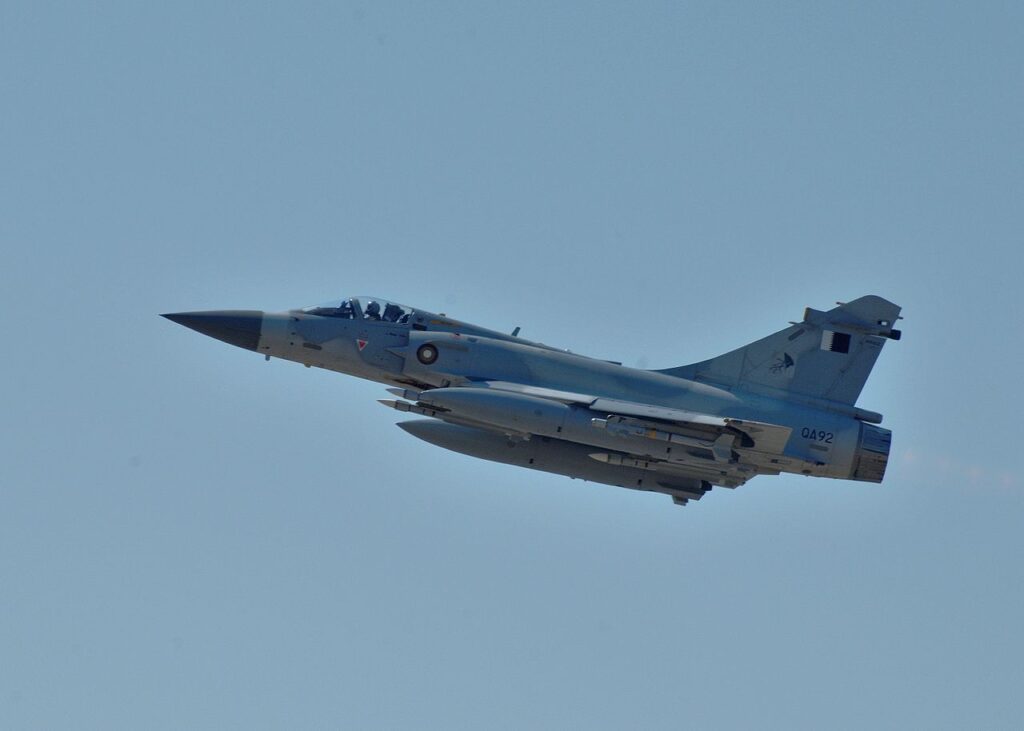
France’s primary contribution to Ukraine’s defensive effort has been the Mirage 2000, which offers a refined air-superiority element to help modernize Ukraine’s fleet. The Mirage is lightweight, highly agile, and equipped with cutting-edge radar and electronic warfare systems, particularly in comparison to the legacy Soviet fighters that had previously dominated the Ukrainian fleet.
Capable of carrying a versatile assortment of ordnance, the Mirage can perform both intercept and precision strike missions. Though the Ukraine’s Mirage fleet is also small, the aircraft has helped to fill a critical gap, and has served alongside the F-16s, complementing the American jet in air patrols and defensive counter-air missions.
Mikoyan MiG-29 Fulcrum
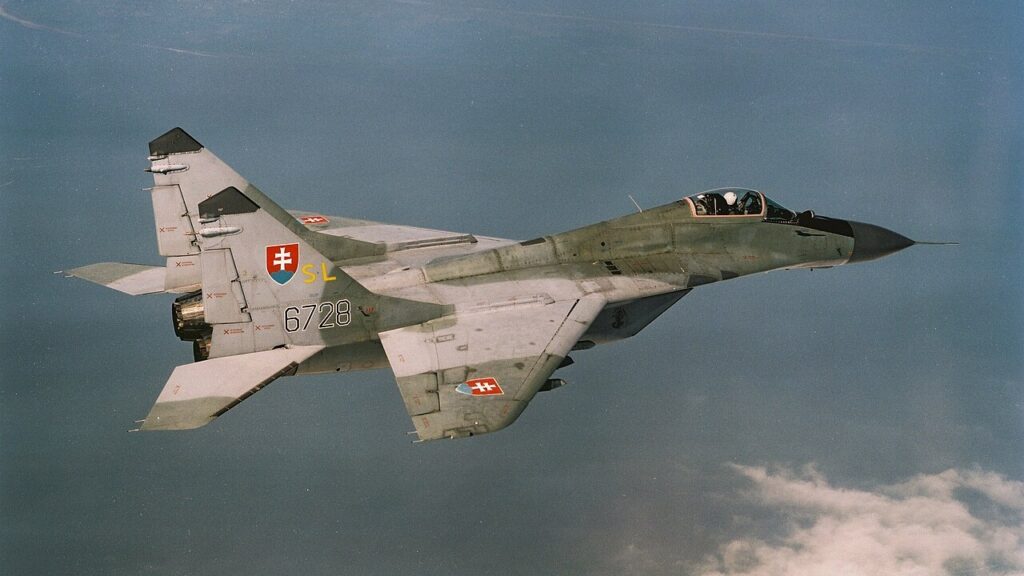
Developed by the Soviet Union during the Cold War, the MiG-29 remains a workhorse for the Ukrainian Air Force. Benefitting from significant Western avionics upgrades, the Ukrainian MiG-29s now have the ability to launch weapons like the AGM-88 HARM anti-radiation missiles and JDAMs.
Ukraine’s NATO allies in Eastern Europe—particularly Poland and Slovakia, which inherited hundreds of MiG jets from the Soviet era—have generously donated MiG-29s to help Ukraine offset its war losses. While not as advanced as Western fighters, the MiG-29 is plentiful and familiar to the Ukrainians, making the jet a reliable frontline aircraft, useful for airbase defense and tactical ground support missions.
Sukhoi Su-27 Flanker
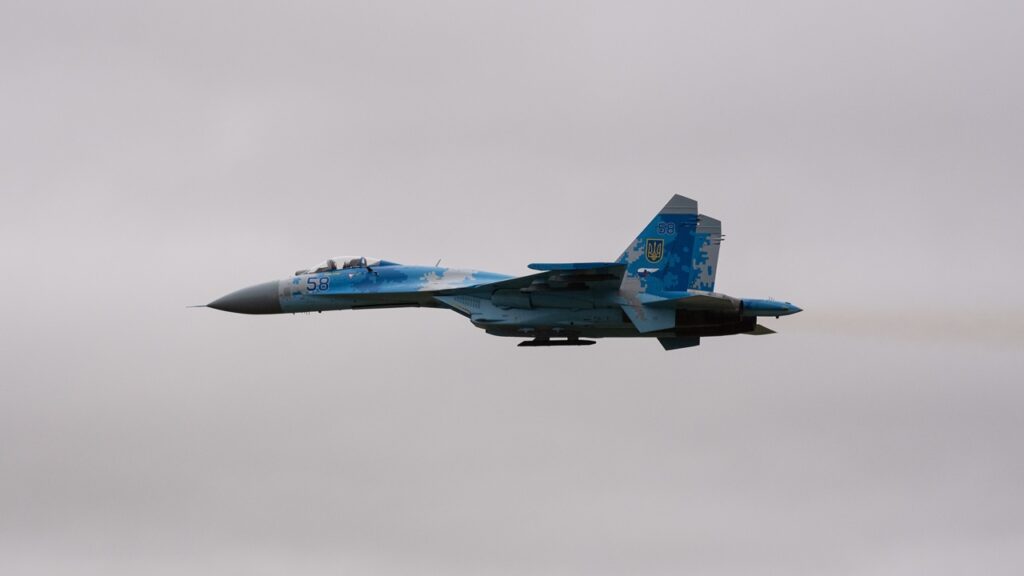
Ukraine’s primary long-range air superiority fighter is the Su-27 Flanker. Another Soviet Union jet, developed to counter US fourth-generation jets like the F-15, the Su-27 features powerful engines, excellent maneuverability, and strong radar capabilities. Although the Su-27 fleet is now relatively old, Ukraine has done a commendable job of keeping the fleet airworthy and combat relevant. In combat, the Ukrainians typically use the Su-27 to patrol Ukrainian airspace, escort other aircraft, and engage enemy fighters at range. By ably fulfilling these missions, the jet is a vital component of Ukraine’s layered air defense.
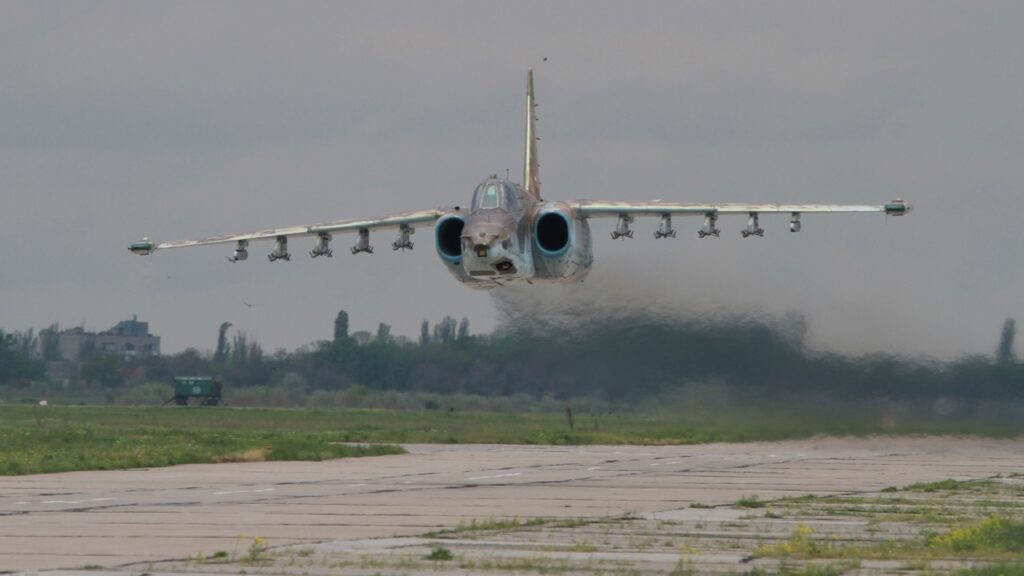
The Su-25 serves as Ukraine’s primary close air support (CAS) and strike aircraft. Built to survive intense fire and operate in rugged battlefields, the Su-25’s closest Western analog is the A-10 Warthog. Like the A-10, the Su-25 excels at attacking armored vehicles, troop concentrations, and enemy positions. However, unlike the A-10, the Su-25 lacks the Gatling gun capable of firing 70 Pepsi can-sized rounds per second.
Despite being an outdated platform, and relatively vulnerable to surface-to-air missiles from the ground, the Su-25 has retained relevance and is still an indispensable front-line operator in Ukraine’s struggle for survival.
About the Author: Harrison Kass
Harrison Kass is a Senior Defense and National Security Writer at The National Interest. Kass is an attorney and former political candidate who joined the US Air Force as a pilot trainee before being medically discharged. He focuses on military strategy, aerospace, and global security affairs. He holds a JD from the University of Oregon and a master’s in Global Journalism and International Relations from NYU.
Image: Shutterstock / MyPlanePics.















